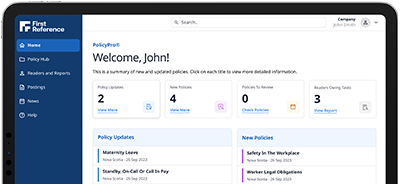Assessment of human resources: An organization’s most valuable assets
John Proctor

How does an organization identify the best person for the job when filling a position? Companies generally follow a defined process for recruiting, hiring and promoting. They have a job description and certain criterion they are looking for. Whatever the process may be, it needs to be robust and legally defensible. The best method for achieving this is to use a formal assessment centre (AC). An assessment centre is “a process employing multiple techniques and multiple assessors to produce judgments regarding the extent to which a candidate displays selected competencies” (International Congress on Assessment Centre Methods).
Why should organizations use an assessment centre when hiring? The greatest advantages include:
- Fairness
- Legal defensibility
- Objectivity
- Ability to predict success in a particular role
There are a few disadvantages to using AC, time and cost being the two greatest. However, the time and cost of implementing an AC process is a small price to pay in return for minimizing legal liability and maximizing workforce competence. Having an effective hiring process can reduce turnaround and improve productivity.
The concept of assessment centres has been in existence for a long time and the first generally accepted industrial application was by AT&T in the 1950s. Since then industrial and organizational psychologists have put a great deal of time and effort into refining and advancing the AC processes.
If an employee fails to achieve the roles or tasks required of them, causes an incident (internal or external) or damages productivity, workplace morale or reputation, questions will be asked about how this individual was selected and hired. When this occurs, it is critical to be able to reach into the locked cabinet and bring out the selection file which demonstrates that a formal and well-researched process was used to hire said personnel.
In order to define a selection process as assessment centre it should meet the following criteria:
- The behaviours (dimensions) required for the job were identified using a formal job analysis
- More than one assessment technique has been used, including a simulation exercise (i.e., an exercise which is similar to a situation that may occur on the job)
- All assessment techniques are designed to provide information on the dimensions previously identified in the job analysis
- More than one trained assessor is used per candidate
- Assessors are trained to classify behavioural observations into meaningful and relevant categories (dimensions, competencies, KSAOs)
- All assessment tools adhere to a common set of standards, meaning each candidate is judged using the same criteria
- All dimensions are assessed at least twice, ideally using different techniques
- A systematic method of recording behavioural observations is used
- The data from all trained assessors and from all assessment techniques is pooled to create a final assessment
A panel interview can be part of an assessment centre, but on its’ own it is not. Similarly, creating “word pictures” of behaviours to be assessed by an individual manager does meet the formal definition of an assessment centre.
Organizations looking at recruiting, restructuring or promoting should protect themselves by using the formal AC process.
John Proctor
Integrated Human Risk Solutions
Table of Contents
Compliance Made Easy®

